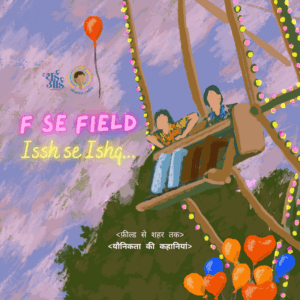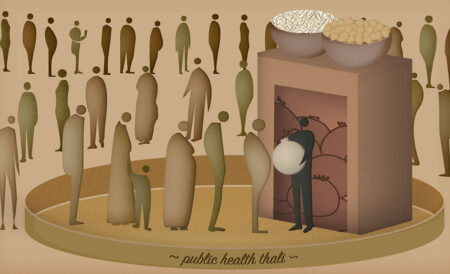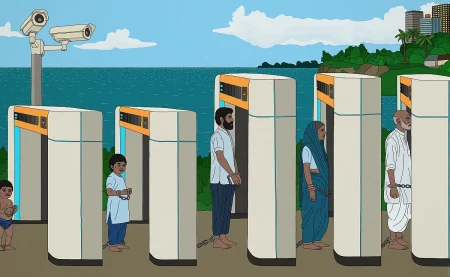Shuvangi Khadka has participated in the EduLog programme with The Third Eye for its Education Edition. The programme mentored 12 writers and image-makers from India, Nepal and Bangladesh to remember—in the present continuous—their experience of education from a feminist lens.
During this TTE programme, Shuvangi has made a short documentary film on two adult women learners in Nepal. Her film ‘Age of Learning’ is currently in the post-production stage. Here, she captures the story behind the making of the film.
One evening, last year, I finally coaxed my mother to sit down and take pause from constantly running around the house. I had been following her around for days to have this conversation. Sometimes, she silently smiled, and at other times, she eluded me. But that evening, she let her guard down.
It started with a question, almost as a sequel to my childhood memories.
“Why did you stop going to your old school?”
I don’t remember much from those days. But one particular memory always stands out. I had come back home from school and had seen my mother’s report card lying around. She had stood second in her class while being promoted from grade 1 to 2. Being raised by a father who always pushed us to aim for the first position in class, her result hardly impressed 12-year-old me.
But this was years ago when my mother and I went to our respective schools. I have no other recollection of how my mother managed to send everyone off to their destinations each morning without delay and then went on to somehow continue her own education in an adult learning school. And so, years later, I coaxed my mother to tell me what she remembered, what she felt and why it mattered to her. Why had she stopped?
“There was a new male teacher who also happened to live near us. Once, while teaching us women, he was exhausted and simply blurted out—‘What is the use of studying for elderly women like you?’ I took it as a cue. And then, you know … with all household responsibilities…” My mother doesn’t elaborate on specific events and I don’t press her.
I understand that a simple inconvenience might have been enough to stop her. Everyone in the family also saw her desire for learning as an indulgence instead of a necessity.
Years later, when she tried to go back, the women’s secondary school that lives discreetly in the labyrinthine streets of Kathmandu had moved. Finding a school with a limited digital presence was not easy, especially for my mother who didn’t even own a phone then. Despite always being on the lookout, she could never really track the school down.
The day after our conversation, I found the school in a single Google search. Then I found similar schools in our city. Then, I found out about women who wanted to go to school but didn’t have such schools nearby. I first came across a local news story from the Gorkha district about a woman going to school alongside little children because there was no adult school in her vicinity. The photos were hazy and pixelated, but the subject was stark–an adult woman sitting behind rows of small kids.
First, in Gorkha, 150 km from Kathmandu, I met Bishnumaya Gurung, a 48-year-old who had left her job as a domestic worker in the Middle East to return and start studying in Nepal. Now, she works in others’ fields to make a living and spends all her free time studying. When I told her about the women’s school in Kathmandu, Bishnumaya listened to me intently and shared her own wish of studying in such dedicated schools in Kathmandu. “But I am not in that position. The rent must be high in the city,” she said.

I think about how easy it is to see our parents only as parents and not as individuals with their own wishes and desires.
I think about how I deal with my mother’s frequent requests. We recently bought a smartphone for her, which she struggles to use. Almost every day, she calls me to write a birthday message for someone on Facebook or sometimes, to check YouTube comments. Sometimes, she comes to me with a small notebook and a pencil that she always keeps under her pillow, saying “Write something for me. I will practise.” Sometimes I help her, sometimes I shrug her off.
I took another day’s journey to the east of Kathmandu to meet Palhamu Sherpa, a 66-year-old. Palhamu was elected as a ward member when she could barely pronounce her rural municipality’s name. After five years, her tenure has ended. Now, she goes to school with her great-grandson. All the while that I was filming, I wondered how this kid would react years later if/when he sees this film. Would he ever truly understand what a powerhouse his great-grandmother is?

Palhamu regularly asks about Bishnumaya. Her eyes twinkled when I mentioned other women like her going to school. Despite the determination these two single women display, going to a school with kids, they also just want to be understood, to know that they are not alone in this journey.
Sitting in those classrooms for hours with these women, I scribbled notes for filming. But soon they turned into notes on how I could help my mother when I returned back home. Maybe I will start with teaching her on some days of the week, or with simple greetings like ‘good morning’ and ‘good afternoon’. My mother is a quick learner. Every day, she reads the newspaper for hours. She can do simple maths. I yearn for days when she doesn’t need to call me to type a message. I yearn for days when she can do a simple Google search and start chasing that dream she left behind years ago.
In the days that followed, we sat with hours of footage of these women. Every day was a day of discovery. A statement that I had misheard or a gesture that I had misunderstood slowly revealed itself. A truth emerged that I hadn’t quite deciphered when we were filming. Soon, we were reconstructing a truth closer to their lives, maybe different from what I had in my mind originally.
But I think this is the whole reason for the documentation—to know the whole truth, to look at things in their entirety. And maybe from these new ways of looking, you find new ways of learning.





